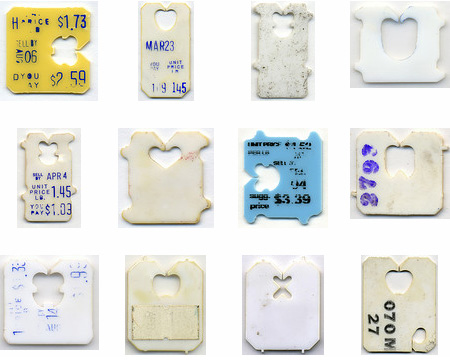
artist unknown
Comment posted to Rhizome.org re: the restoration of Agatha Appears, a net art work by Olia Lialina:
I am proud to be a part of the new webring for Agatha.
In a talk at Bryce Wolkowitz gallery a while back Olia Lialina discussed the context of this work when it was made [1997] versus the present context.
Everything on the Web loaded slowly and you never knew what was coming up or when.
Consumers had more patience because they were accustomed to this.
Her art played with the uncertainties of this new vehicle.
To consume the site now you should know you are meant to keep clicking somewhere on the page in a state of semi-frustration. You don't get to the globe hopping web ring without navigating a series of popups and new pages that you have to keep clicking, clicking.
I raised a point in the new media vs artists with computers discussion that no one responded to. For proles like me who use Windows at home because it is the workplace default, there has been a certain loss of innocence about clicking pop ups, or clicking a lot of unknown places on a web page. IE is called Internet Exploder for a reason. Even with Firefox 3 we still get trojans pushed onto our computers (and Firefox 3 wouldn't allow certain popups on Agatha).
So, because of this menace, clicking around websites is not viewed with pleasure but with trepidation. Isn't this a fundamental change in the work and should restorers be taking this into consideration? Should critics and curators of web art?
Update: Just to clarify--not saying Lialina's project is infected, merely that it was made before infection became an everyday occurrence.
well, two places:
Britta Gustafson on the animated silhouette film Prince Achmed. Good thoughts and copious linkage about the movie.
Some discussion at Paddy Johnson's of Mark Essen's videogame-as-art Flywrench. A tangle of misunderstanding and mutual suspicion among gamers, art worlders, new media people, and assorted freaks, some of it unkinked on the thread. My contribution was to mention the LSD game, quite simply the best-sounding video game ever.
An early Jenny Holzer art work, from Street Art, by Alan Schwartzman, 1985:

We're discussing Jenny Holzer over on Paddy Johnson's page. Johnson and others have noted the connections between Holzer's "truisms," currently the subject of a museum show, and the 140-character text squibs people are writing on twitter.com--specifically, Johnson is taking on the meme "Jenny Holzer is the patron saint of Twitter." My take on that (copied and pasted from Johnson's comments):
When you say Holzer's actual “Truisms…are being published under Holzer's name on Twitter,” as far as we know that is not Holzer doing that, right? [Johnson confirms it isn't.]
It would be funny if it was. Holzer's career started in the late '70s with her slogans on typeset pages tacked to NYC phone poles. They looked like the work of an anonymous nut, and the anonymous nut is surely the patron saint of the Internet.
I personally think the giant LED versions are an unnecessary detour between the intimacy and strangeness of her early work and the intimacy and strangeness of reading random Holzer-like sentences online. She started out as what we would now call a "relational" artist and is being imitated by the current cyber-versions of relational artists, but what she's famous for are her overdetermined art world objects. Commodification isn't bad in and of itself but I've never understood the logic of it in her case.

scans (I assume) from sarcoptiform on flickr (follow link for enlarged views--toasty!).